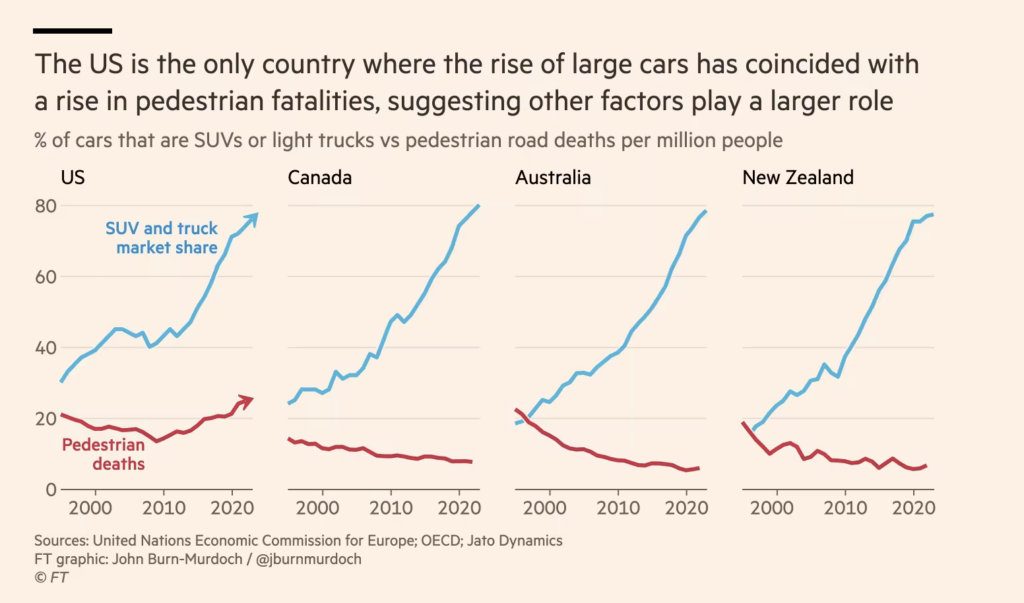Unsafe at American speed
Following up on Paul’s post earlier, the FInancial Times recently had a fascinating look into why auto-related fatalities are so much higher in the US than in peer countries. The most natural explanation is Americans driving more miles and in larger cars, but this appears to be a relatively modest factor:
I have good news and bad news about America’s roads. The good news is the number of people killed in traffic collisions fell by almost 4 per cent in 2023. The bad news is the mortality rate on US roads is still 25 per cent up on a decade earlier, and three times the rate of the average developed country. Most of the explanations commonly put forward for why US roads remain so deadly focus on broad structural factors such as vehicle size or time spent on the road, but a review of the evidence suggests this may be mistaken. Last year’s improvement is a case in point. Two reasons often cited as key causes of poor US performance both worsened: the total number of miles driven by Americans increased, and US cars continued to grow larger. Yet fatal collisions still declined.
Also, other countries have seen the consistent increase in vehicle size without the increase in fatalities:

The most important factor appears to be is that — while there’s a lot of variance between states — Americans are just disproportionately shitty drivers:
In an eye-opening analysis last year, Emily Badger, Ben Blatt and Josh Katz of The New York Times revealed that the rise in US road deaths was driven almost exclusively by pedestrian fatalities happening at dusk under fading light when drivers are most likely to be using their phones. A theory emerged that the proliferation of smartphones in a population who, unlike their European counterparts, almost exclusively drive cars with automatic transmission gives them a false sense of security about how dangerous it is to multitask at the wheel. Yet this idea only half works. Using phones at the wheel is a big problem in the US, according to data from Cambridge Mobile Telematics. But just across the border, Canadians, who also drive automatics, spend less than half as much time using their devices while driving. The determining factor seems to be different attitudes to safety, with Americans twice as likely as Canadians or Europeans to say they find it acceptable to use a phone while driving.
The same pattern shows up in other behaviours. Americans are much less likely to wear seat belts than most Europeans and also have higher rates of drink-driving.
It’s hard not to suspect that there’s a relationship between this dara and the United States having the most consistently reactionary major nationally-competitive brokerage party among major liberal democracies.


